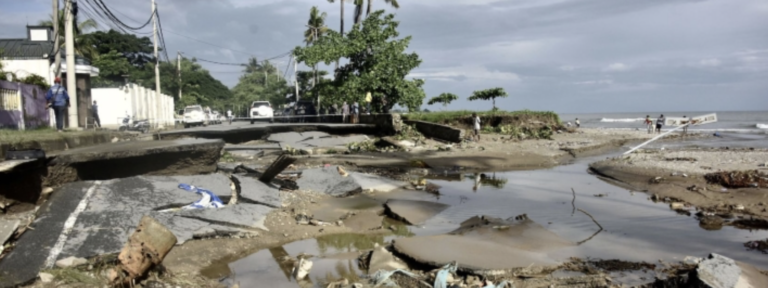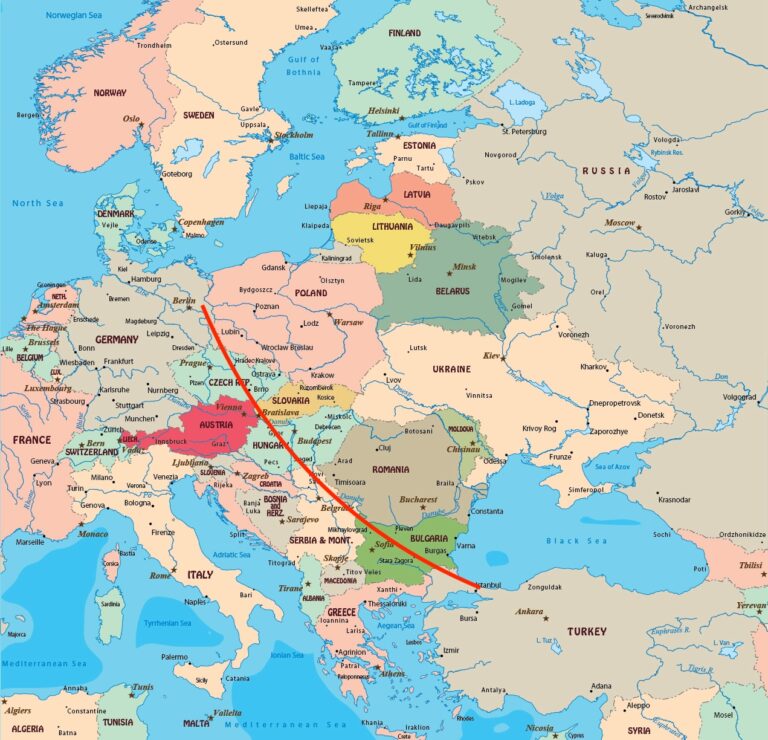The monsoon season, which runs from June through September, has become a nervous time for the people of Nepal.
The climate crisis has supercharged the fallout from the annual rains, which are triggering an increasing number of floods and landslides, disasters that are especially devastating in a nation defined by its vertigo-inducing slopes.
From the glacial mountaintops of the Himalayas to the crowded streets of Kathmandu, the bitter irony is not lost on the Nepalese; the very life-giving monsoons that have shaped their culture have become a source of fear.
Dhanmaya Thami, a mother-of-five, is well-acquainted with the threats posed by the rains. During the 2020 monsoon, a landslide swept through her village in the Lapilang district, destroying her home and livelihood in seconds.
“When the landslide occurred, we didn’t know where to go, and everyone was crying and shouting. Everything got buried, and we became homeless,” she recounts. “We did not even have anything to wear. We escaped, but the chickens and goats were killed.”

That landslide was just one of the hundreds that occur in Nepal each year, a phenomenon steadily growing as fluctuating temperatures and rainfall – both consequences of the climate crisis – destabilize Nepal’s mountainsides.
Despite contributing just 0.02 per cent of global greenhouse gas emissions, Nepal is one of the most vulnerable countries in the world when it comes to impacts from the climate crisis. With its heart in the Himalayas, where glaciers are now melting twice as fast as they were 25 years ago, the nation’s geography leaves it especially vulnerable to floods and extreme landslides.

In the wake of the 2020 landslide, Nepal’s Ministry of Forests and Environment began transforming hillsides into agricultural terraces, an ancient practice that, by breaking the natural slope of the land, slows down water runoff during heavy rains and prevents the soil from being washed away.
Levelling the steeply sloping farmland into flat platforms also retains moisture and nutrients by allowing water to soak into the soil rather than flowing away downhill, increasing crop yields and improving resilience in the dry seasons.
In three regions – Dolakha (home to Lapilang village), Achham, and Salyan – that work is being supported through a project funded by the Global Environment Facility and implemented by the United Nations Environment Programme (UNEP). But the project has gone beyond simply constructing terraces.

Crucially, local communities were trained to protect the forests uphill from their terraces. In a prime example of ecological engineering, the trees’ interlocking root system provides a net that prevents the soil from simply sliding down the slope during periods of heavy rain. The uphill forests also absorb significant volumes of water, reducing the amount in the soil, which could otherwise trigger a landslide as the ground becomes saturated and heavy.
A global 2019 study found that cutting down forests nearly doubled the number of landslides, with two- to 13-fold increases in landslide areas. Experts therefore argue that forest conservation is a crucial strategy, particularly considering that, globally, the amount of land lost to erosion is equal to one football pitch every five seconds.
The ability of healthy ecosystems to tackle climate change by absorbing carbon emissions is well known. But this other ‘service’ of increasing community resilience against climate impacts – technically referred to as ecosystem-based adaptation – can often be overlooked.
The UNEP-backed project in Nepal is now restoring almost 1,300 hectares of forests and rangelands, benefitting more than 56,000 people by reducing their risks to climate change.
The Government of Nepal is also partnering with UNEP to develop a plan to help the nation adapt to the climate crisis, which will integrate the key lessons and local traditional knowledge from Dolakha. Experts say these national adaptation plans are essential for moving towards comprehensive and proactive planning for climate adaptation, rather than merely reacting haphazardly to climate impacts when they occur.

“We’re not simply responding to the climate crisis; we’re proactively addressing it using a multi-faceted, ecosystem-based strategy that harmonizes with nature,” says Jessica Troni, Head of UNEP’s Climate Change Adaptation Unit. “Our project with the Nepalese government shows that tackling climate change isn’t just about reducing emissions. It’s also about making our societies more resilient to the changes that are already occurring and anticipating those that will come. Climate change is here to stay, but so are we.”
In addition to protecting the forests, farmers were shown how to plant trees and local grass species at the edges of their terraces to bind the soil together for added strength. This strategy was not only protective but also productive. The terraces and newly planted trees, particularly fruit trees like oranges and peach, offered an additional source of income.
“The terrace improvement and bio-engineering works have increased our farm productivity by retaining soil nutrients and controlling topsoil erosion,” said Thami.

Just one hour’s drive from Thami’s home in Lapilang, the project is building a pond that captures rainwater as it flows down the mountain. The system mimics the natural drainage services that lakes and rivers provide. The pond prevents flooding by capturing excess water that is then used by the surrounding farmers as a lifeline to grow crops in the dry season.
It is part of a wider system, including the upland forests and terraced fields, designed to protect mountainside communities.
“A key defining feature of ecosystem-based adaptation is that it takes a holistic approach to the environment and people’s place within it,” says Troni.
For more information about the project, officially titled Catalysing Ecosystem Restoration for Climate-resilient Natural Capital and Rural Livelihoods in Degraded Forests and Rangelands of Nepal, please contact Jessica.Troni@un.org
The Six-Sector Solution to the climate crisis
UNEP is at the forefront of supporting the Paris Agreement goal of keeping global temperature rise well below 2°C, and aiming for 1.5°C, compared to pre-industrial levels. To do this, UNEP has developed the Six-Sector Solution, a roadmap to reducing emissions across sectors in line with the Paris Agreement commitments and in pursuit of climate stability. The six sectors identified are: energy; industry; agriculture and food; forests and land use; transport; and buildings and cities.
Read more: https://www.unep.org/news-and-stories/story/nepals-slopes-villages-brace-worsening-monsoon




